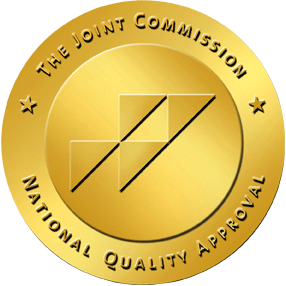Detoxification, or detox, is often the first step in overcoming substance use. It involves eliminating harmful substances from the body to help individuals start their recovery journey with a clean slate. However, detox is more than just abstaining from drugs or alcohol—it’s a medically supervised process that helps manage the often intense withdrawal symptoms that occur as the body adjusts to functioning without the substance.
If you or a loved one are starting the recovery process, detox is the first step in the journey. Let’s learn more about what happens during detox, the withdrawal symptoms to expect, and how they can be managed safely.
What is Detox?
Detox is the process by which the body rids itself of toxic substances accumulated through drug or alcohol use. It’s not a full treatment for addiction but serves as the foundation for further therapeutic interventions. The goal of a detox rehab program is to safely manage withdrawal symptoms, stabilize the individual physically and mentally, and prepare for ongoing treatment. Because withdrawal symptoms can be life-threatening, detox should be monitored by medical professionals.
What Happens During Detox?
The detox process can be broken down into several key phases:
Evaluation
Medical professionals start by assessing your physical and mental health. A mental health evaluation helps identify co-occurring disorders such as anxiety or depression, while blood tests determine the type and level of substances in the body. This comprehensive evaluation allows for a personalized detox plan to ensure safe and effective treatment.
Stabilization
During stabilization, you’ll stop using substances under medical supervision. Some substances can be stopped right away while others require a tapering approach. Medications may be provided to ease withdrawal symptoms, such as methadone for opioid withdrawal or benzodiazepines for alcohol withdrawal. Nutritional support and hydration are also offered to restore physical well-being. The goal is to keep you comfortable while you undergo withdrawal.
Transition to Treatment
Once stabilized, you will be encouraged to begin counseling, therapy, or a residential or intensive outpatient program. This phase ensures that detox is not treated as a stand-alone solution but part of a larger recovery plan. During treatment, you will focus on addressing the psychological components of your addiction, such as trauma, mental health disorders, or low self-esteem.
Common Withdrawal Symptoms and How They’re Managed
Withdrawal symptoms vary based on the type of substance, duration of use, and individual health factors. Here’s an overview of common symptoms and how they’re managed:
Alcohol Withdrawal
Alcohol withdrawal symptoms include tremors, anxiety, sweating, nausea, seizures, and hallucinations (in severe cases). To manage these symptoms, your medical team may prescribe benzodiazepines (like diazepam) to reduce anxiety and prevent seizures, as well as IV fluids for dehydration.
Opioid Withdrawal
The symptoms of opioid withdrawal include muscle pain, insomnia, diarrhea, vomiting, cravings, and anxiety. Medications such as methadone or buprenorphine can reduce cravings and withdrawal severity.
Stimulant Withdrawal (Cocaine, Methamphetamine)
Stimulant withdrawal symptoms include fatigue, depression, agitation, increased appetite, and insomnia. These symptoms can be managed with supportive care, antidepressants, sleep aids, and behavioral therapies to manage psychological symptoms.
Benzodiazepine Withdrawal
Benzo withdrawal can involve panic attacks, insomnia, seizures, and muscle spasms. Gradual tapering can help prevent severe withdrawal effects and seizures.
How Medical Detox Ensures Safety
Detoxing without medical supervision can be dangerous, especially for substances like alcohol, opioids, and benzodiazepines, which carry severe withdrawal risks. Professional detox ensures safety in a number of ways. First, it provides 24/7 monitoring, allowing medical staff to quickly respond to emergencies like seizures and severe dehydration.
Second, medical supervision ensures that medications are administered correctly to prevent complications and ease withdrawal symptoms. The more comfortable you are, the better you can focus on recovery. Lastly, a medical detox program offers emotional support in the form of counseling and peer support, helping individuals cope with the psychological stress of withdrawal. Overall, professional detox minimizes risks and increases the chances of a successful recovery.
The Role of Support in Detox
Detox can be an overwhelming experience, but having the right support system can make a significant difference. Some key support elements include family involvement, peer support groups like Alcoholics Anonymous (AA) and Narcotics Anonymous (NA), and aftercare programs that provide counseling and relapse prevention tools. Your support system can help you stay motivated and connected throughout your recovery journey.
Detox Rehab in Santa Rosa, CA
Detox is a crucial first step in overcoming substance use, but it must be done safely under medical supervision. Managing withdrawal symptoms effectively through medications, monitoring, and emotional support ensures a smoother transition into further treatment. While detox clears the body of harmful substances, recovery is a lifelong journey that requires commitment, support, and a solid treatment plan. With the right approach, detox can mark the beginning of a healthier, sober life. To start your journey, contact Pura Vida Recovery today.





